- Your School Type
- Solutions
- Resources
- Blog
- Events
- More
- Contact Us
- Book a Demo
- Get a Quote
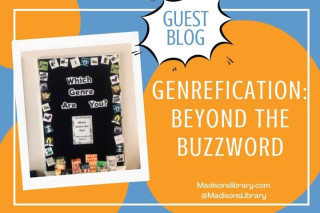
We are excited to share our first guest blog of the year written by Madison Dearnaley!
Madison works as Information Services Teacher Librarian at a secondary library in a P-12 school and believes that reading is vital for learning and expanding worldviews. Most importantly she believes that reading is for enjoyment.
In this guest blog, Madison discusses Genrefication and it's relevance beyond the buzzword.
Genrefication has been a bit of a buzzword in the past decade since interest started building and debates have raged on whether we as librarians should embrace or shun the changes.
I began my genrefication journey in 2017, and since then I have genrefied fiction and non fiction collections and created special collections that mix both fiction and non fiction. I have researched genrefication, written about it and even presented about my genrefication journey. However, it never surprises me that there is always more to learn about genrefication, other ways to view and approach it, and more research and trends around the topic popping up every day.
But is genrefication still relevant? Is it still a buzzword? Does it deserve to be? How many libraries have genrefied and moved on? How many have decided it isn’t for them? I asked attendees at the Brisbane 2021 National Education Summit if they had genrefied their library collections and 71% reported that they had undertaken some form of genrefication.
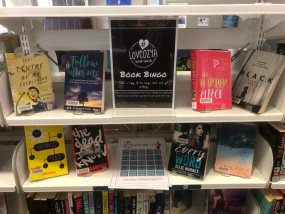
A quick look at recent school library publications and research, as well as topics that regularly appear on network email lists and social media, indicate that genrefication is still a hot topic. Ditching Dewey is one of the current trends, as those both inside and outside of the library industry discuss the problems with the Decimal System and how it does not adequately reflect our diverse and inclusive collections. The other change, since I first started my genrefication journey, is the increased awareness and reflection of genrefied layouts by library software and suppliers. Once, it was near impossible to get a genre spine label that adequately reflected everything you need it to, while now there are endless options. Our library management systems have also been updated to reflect the changes in how we choose to group by genres.
The discussion to genrefy or not continues to pop up in librarian groups - sometimes to heated levels. Some are hugely for it and proudly claim that they have also Ditched Dewey! Others remain true to traditional layouts. I for one have seen the benefits of genrefication, but not always in the ways I expect. However, whatever your thoughts about genrefication, I have always believed that it alone is not a fix-all strategy for improving student reading rates or library usage. I only need to look back to how our students initially responded to the fiction genrefication and our resulting slump in loan statistics to know that genrefication alone doesn’t do much at all. Instead, I firmly believe that it is the process of genrefication that makes the impact and it takes a mix of marketing and promotions, reader advisory, and a beautiful, relevant, accessible and easy-to-navigate collection, which may or may not be genrefied, to truly increase engagement with our collections.
Maybe you are reading this, curious what others think about genrefication. Maybe you are considering genrefying a collection but are not sure how to share that vision with your library team. Maybe you are looking at a previously genrefied collection and wanting to update and refine it. Or maybe you are just testing the water to see what all the buzz is about.
So, if I was to summarise the research and my key beliefs and tips about genrefication, they might read a little like this.
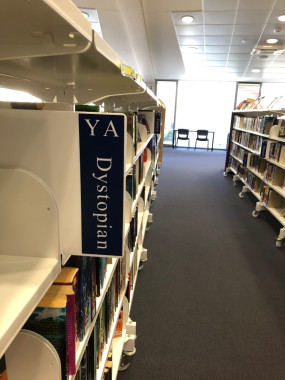
I think the key thing about a genrefied collection that sets it apart from traditional layouts is that it is never, ever finished or static. In a traditional layout, you might place a book under the author’s name or a decimal number with very little intention of ever moving it. That’s the whole point, right? A place for everything and everything in its place. In contrast, a genrefied layout can change any time you like or need. For example, collections that are no longer topical might be merged with others. New collections might emerge with new publishing trends or student interests. You might change the name of genrefied collections to better fit the current terminology. A book might initially be catalogued with one genre, fantasy for example, but you might change it to adventure if you know it will get more visibility in that collection or appeal to those frequenting the adventure collection. You might update your genre stickers to replace older, outdated imagery. You might move the collections around to highlight different genres at different times or simply to change up their visibility. With a genrefied collection, the users and the librarians are the experts and can change the collections to reflect their interests and needs. It’s what I love the most about genrefication - that it is flexible, designed for customisation, and makes change so easy.
Okay, here’s the top line. Genrefication research, while limited to anecdotal research, focuses on reader and librarian satisfaction. A genrefied library makes it easier for readers and librarians to find what they are looking for, quickly. It makes it easier to give recommendations (librarian to patron or peer to peer), give book talks and find genres, especially those that might be smaller or less prominent. A genrefied collection is easier to navigate and increases the likelihood that peers will share recommendations, as well as creating better discoverability of titles. Simply put, people are more likely to find what they are looking for or find something they like in a genrefied layout.
Nope. I have found that genrefication doesn’t actually increase loan statistics. In fact, when we genrefied the first time, our stats plummeted. Looking across the schools I’ve worked in, genrefication alone is not a factor for those with high borrowing statistics. The research supports this. While some research states an increase in borrowing with genrefication, others report no change and there actually isn’t a lot of data around loan statistics in the research. I firmly believe, and can support this with my own data collection, that it is all the things that go with the genrefication process - weeding, refining the collection to promote beautiful, high interest titles, clear signage, marketing of collections - that gets the books into readers’ hands. But more on that later.
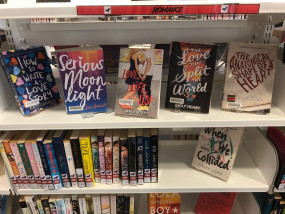
Here are the top arguments I hear against genrefication and my personal experience in response.
Actually, I’ve found the complete opposite. I always say, anyone can place a book under the author’s last name. Only a librarian knows their collection and their readers. Only a librarian knows where to place a book in a genre that best fits the book, the students’ needs, and where it is most likely going to be discovered. Only a librarian can update the collections and ensure they best fit the needs of the students.
Firstly, even traditional layouts differ between these systems, so there is no guarantee I am sending students into a known world. Secondly, I teach students how to find the information or resource they need. How to navigate a catalogue, complete a search and then find the resource on the shelf, no matter which layout is used. I don’t teach, for example, the Decimal system, for its own sake. Besides, some of my genrefied collections have retained A-Z or Decimal system layouts, just within each genrefied collection, so I still cover how to navigate these systems.
Trust me. They do. If they love Anh Do that much, they’ll find his books in fantasy or funny books or wherever else they might be placed. Because a). Obsession and b). OPACs and see the paragraph above.
Sure, that’s the great thing about genrefication. You can place it in a genre, try it out, see if the students find it there, move it, ask the students where it fits, move it again. There is no right answer. Just the right answer for right now for your students. No, you don’t need multiple copies, one for each genre. Just one. And clearly mark it in the catalogue. And, if you want, add the other genres in the catalogue record so it is easy to find there as well. The software makes it easy to do this now. Lists and signage also helps to promote books in multiple genres.
Actually, I’ve found that students are far more likely to try a new genre (usually something their friend is loving), find more books to love (for example, migrate to other funny books and not just re-read the Diary of A Wimpy Kid books) and follow their favourite author across genres (see point above re authors). It also highlights books and genres they didn’t even know you had because the books were hidden under B, H, T and W. There are also other ways you can encourage students to try other genres, such as bingo reading cards, fun reading challenges, or lucky dip and blind date books.
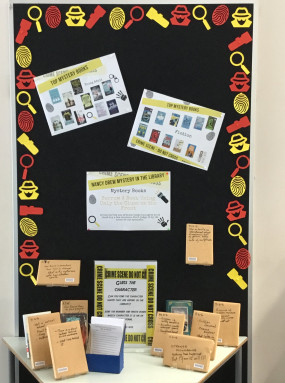
I would say do it for yourself. Honestly, the thing I love most about genrefication is how much easier it makes my job. It’s easier to see which genres and collections the students are loving and ensure I have enough resources for them. It’s easier to find those smaller collections and ensure they can be found by students. It’s easier to see the bias in the collection and ensure I purchase in a more distributed way. It’s easier and quicker to make recommendations, especially for reluctant readers. It’s easier for students to take the lead, make recommendations and have their say in the collection. Once we genrefied, we had students tell us we didn’t have enough romance books and to purchase more. Before genrefication, they would not have felt confident enough to make that request.
I think the most common way someone might genrefy is to:
Step 1. Select the genres or collections, guided by what’s on the shelves, student interest, current trends, and future direction of the collections.
Step 2. Decide on your grouping and layout.
Step 3. Label and move the books.
Step 4. Update the catalogue to reflect the new locations and collections.
Step 5. Promote.
Step 6. Reflect and refine.
How and when you do all this, and even in what order, is up to you. People often ask me how long it takes. That depends. How many books already have genre stickers? How many resources do you have? How many hands do you have to help (don’t forget students can be great helpers). Do what works for you. Do you want to do it all in a short, intensive time or could you label the books gradually and then do the move and catalogue update in one day?
When we first genrefied, this is the step we missed (whoops). It seems obvious now, but back then we genrefied and ensured we had clear signage and thought that the new layout would do the rest. Instant love from students and increased loan stats! That’s what the articles we’d read seemed to indicate. It couldn’t have been further from what happened. The students hated the layout. Loan stats dropped. So began a year of targeted, intentional promotions. New and better signage. Book talks that actively promoted the genres. Genre displays with interactive elements. A massive cull of old, no-longer-of-interest resources. Empty shelves to fit forward facing books. And then, yes, our loan stats started to rise and rise and students were talking about how much they loved the layout and were fighting over books and telling us we’d placed a book in the wrong genre and giving recommendations to each other and requesting new purchases.
Gather some loan statistic data and responses from students about what they like and dislike about the layout before you move so you can compare it to after the change. Share your process and results. It makes for interesting research and the results just might surprise you.
If you would like to read more about my genrefication journey, you’ll find articles about genrefication research, genrefying fiction and non fiction, promotion ideas and reflections on my website madisonslibrary.com